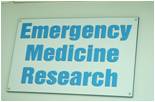| | | | < zurück | - Wie schreibe ich einen Arztbrief auf Englisch?
| | Nachstehend findet ihr den groben Aufbau eines Arztbriefes in englischer Sprache sowie gängige Formulierungen
für den körperlichen Untersuchungsbefund. Wie auch im deutschen ist die
Bandbreite hier ziemlich groß und der folgenede Text ist als ein
Beispiel zu betrachten. |
|
History
of present illness (HPI):
kurz
Beschreiben, warum Patient in die Klinik kommt, Verlauf der Beschwerden
und eventuell damit im Zusammenhang stehende Begleitumstände
Past
medical history (PMH):
bisherige Krankheiten/Diagnosen auflisten
Past
surgical history (PSH):
Welchen Operationen hat sich der Patient bisher unterzogen
FAMILY
AND SOCIAL HISTORY (FH/SH):
Krankheiten in der Familie, Familienstand, Lebensverhältnisse
REVIEW
OF SYSTEMS (ROS):
Patient denies or reports/ negative or positive for:
fevers, chills, sweats, weight loss, headaches, visual changes, cough,
shortness of breath, chest pain, abdominal pain/discomfort or distention, change in bowel habits, back pain
Current
Medication:
alle Medikamente, auch "selbstverordnete"
Laboratory
data:
zum Beispiel:
sodium, potassium, chloride, CO2, BUN, creatinine,
glucose, normal liver function tests, normal bilirubin, albumin,total
protein, hematocrit, WBC, platelet count, . Urine showed: trace ketones, positive bilirubin, positive nitrates
Vitals:
immer folgende fünf Parameter:
Blood pressure, pulse, respiratory rate, temperature, weight
Physical
Exam:
XY is a well-developed,
well-nourished woman in no acute distress. HEENT: Pupils are
equally round and reactive to light. Sclerae are anicteric.
Extraocular movements are intact. Mucous membranes are
moist with no evidence of thrush or lesions in the hard or soft
palate. Neck is supple without cervical, submandibular,
supraclavicular or infraclavicular lymphadenopathy. Chest: clear to auscultation bilaterally. Heart: notable
for a normal S1, S2 with/without frequent extrasystole and no rubs,
murmurs or gallops. Abdomen: soft with mild tenderness in the
epigastric region as well as in the left upper and lower
quadrants to firm palpation. There are normoactive bowel
sounds in all 4 quadrants. There is also
shifting dullness
and bulging flanks consistent with abdominal ascites. Surgical scars: clean, dry and intact with no
exudate or
erythema. Extremities: without cyanosis, clubbing or edema.
Neurologic Exam: Cranial nerves II through XII are grossly intact.
Strength is 5 out of 5 throughout with 2+ reflexes.
Sensation to fine touch is intact throughout. The
patient
is alert and oriented x 3.
Alternative Version:
XY appears well, he/she is in no apparent physical distress. HEENT: Within
normal limits. Respiratory: normal with no intercostal retractions.
Cardiac: No cyanosis or jugular venous distention. Musculoskeletal:
Upper extremities and neck with full range of motion. No spinal or rib
tenderness. Lymph: No cervical, periclavicular or axillary adenopathy. GI: Soft,
obese, nontender abdomen with no organomegaly. Neurologic:
Grossly nonfocal with no tremors. Psychiatric: Alert and engaged with
distant and recent memory grossly intact.
Assessment
and Plan:
kurze Zusammenfassung der Anamnese, Eindruck, Vorgehen
|
| | | |

